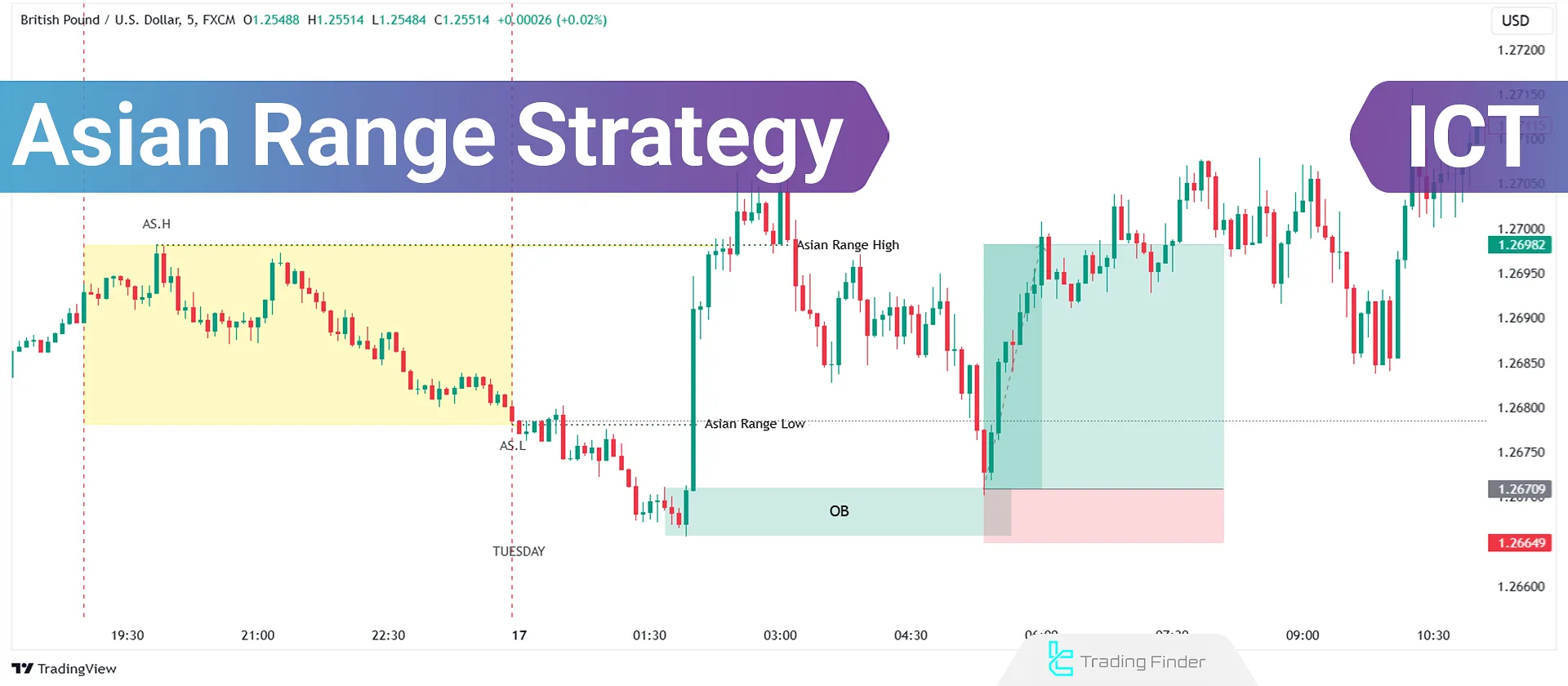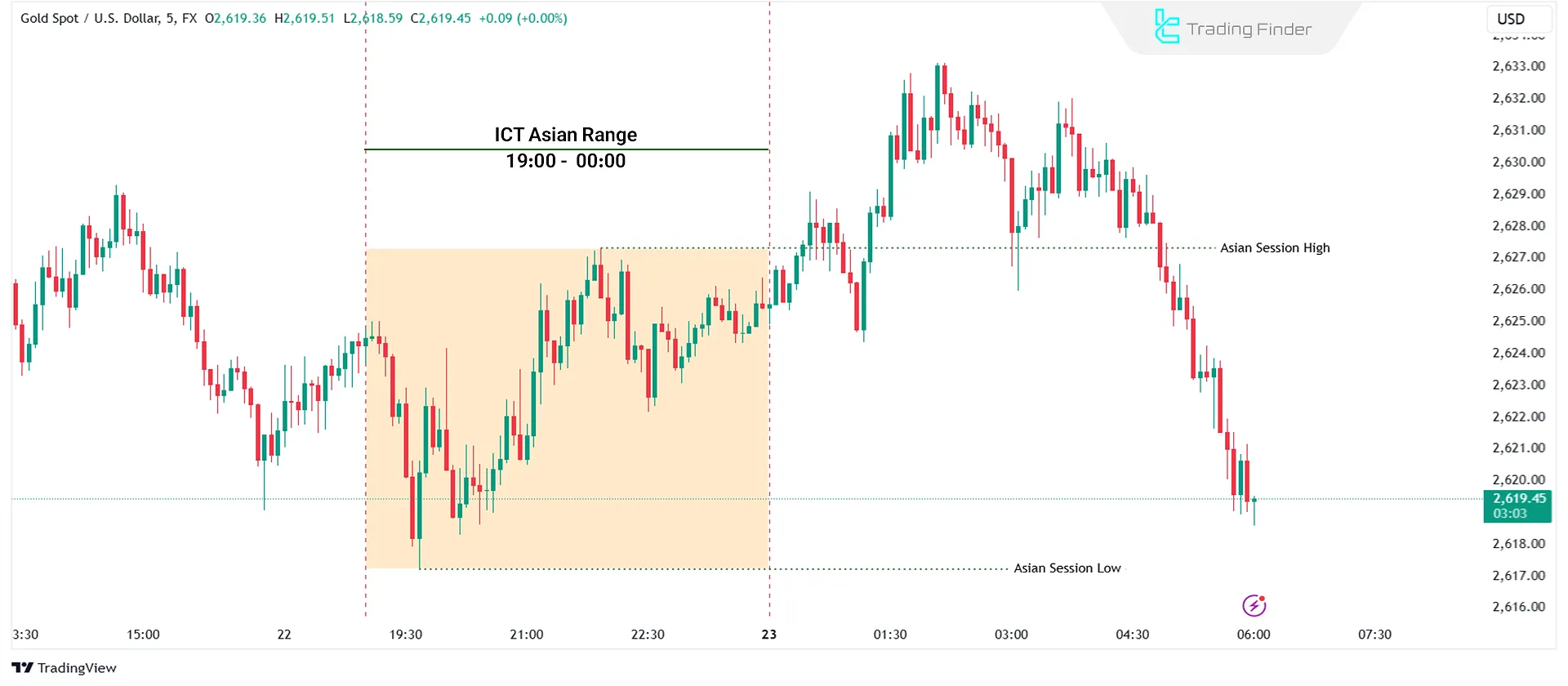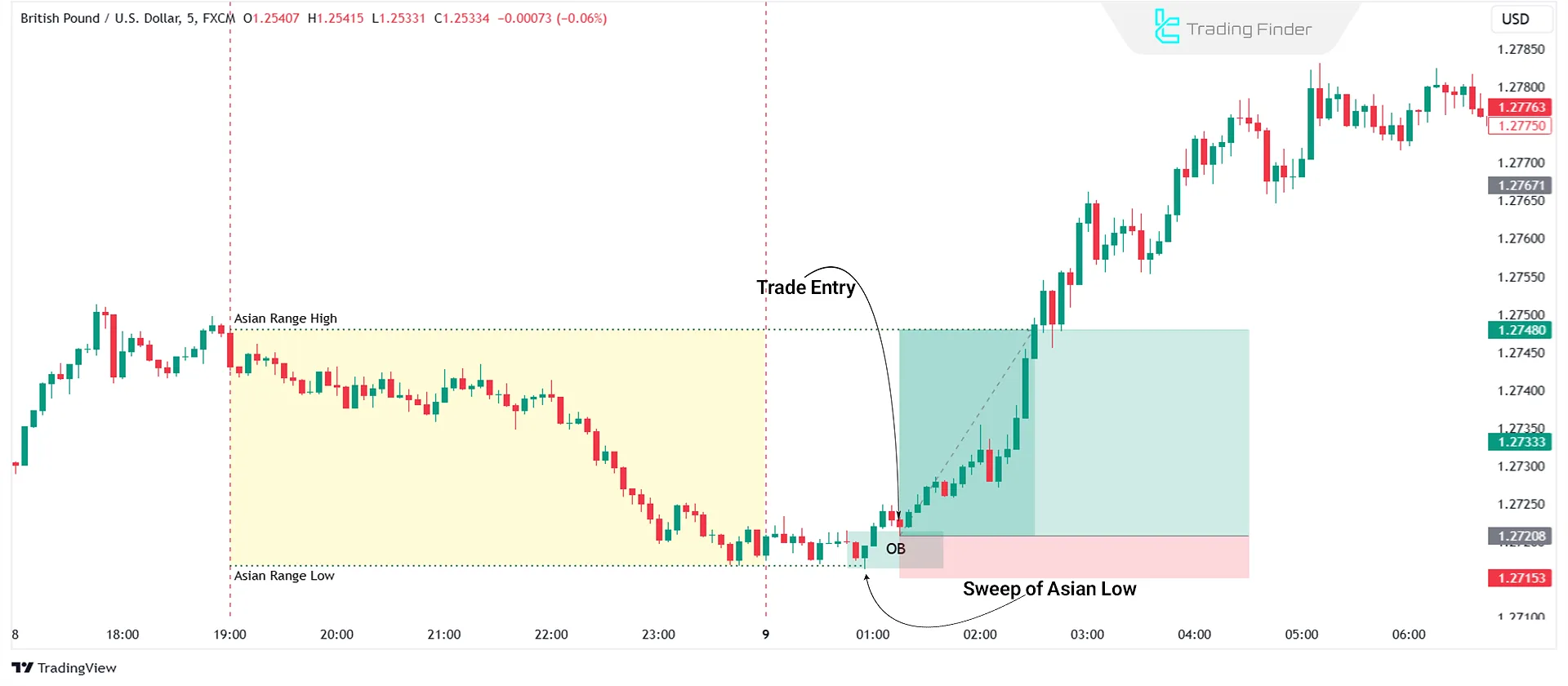The “ICT Asian Range” strategy focuses on price movements during the Asian trading session [from 7 PM to midnight New York time].
The Asian Range Trading strategy does not rely on complex indicators or advanced algorithms. Instead, it depends on the trader's ability to observe and interpret price movements within a specific timeframe.

What is the ICT Asian Range Strategy?
According to the ICT Asian Range Trading setup, the price range during the Asian session provides critical insights into potential market movements in subsequent sessions.
Key characteristics of the Asian Range strategy:
- Timeframe: Typically from 7 PM to midnight New York time.
- Identification: The highest and lowest prices within this specific period.

Why is the Asian Range important?
Understanding the Asian Range can enhance your success rate in trading. Asian Range Advantages:
- Early market insights: The Asian Range sets the daily market trend, allowing you to anticipate market sentiment earlier.
- Liquidity indicators: It reveals how major players are positioning themselves, offering clues about potential price movements.
- Volatility prediction: The price volatility during this session acts as a guide for predicting the level of volatility in subsequent sessions.
- Risk management: The Asian Range provides suitable levels for setting stop-loss and take-profit
How to use the ICT Asian Range Strategy?
To effectively execute the ICT Asian Range strategy, follow these steps:
- Identify the Asian Range: Observe price movements during the Asian session and pay attention to key fluctuations.
- Mark the range: Highlight the highest and lowest prices during this period, as these levels become key reference points.
- Analyze breakouts: Monitor price movements beyond the defined range; such movements indicate potential market changes.
- Examine market context: Align your analysis with overall market trends Daily Bias to improve trading accuracy.
- Execute trades: Open positions based on breakouts or reversals from the range.
Implementing the ICT Asian Range Strategy in Bullish Conditions
- Drawing the range: Extend the Asian high and low to future sessions to frame your trading setup.
- Looking for dips: In a bullish market, wait for the price to dip below the Asian low, liquidity sweep and trapping traders.
- Entry options: After sweeping the Asian low, consider the following actions:
- Enter a buy position below the midnight New York session open price, but not before the Asian low is swept.
- Buy when the price reverses and breaks above the Asian high, confirming the bullish trend.
- If the buying opportunity below the midnight open is missed, wait for the price to return to the Asian high during the New York open.
After sweeping the Asian Range liquidity, look for an ICT Market Structure Shift (MSS) to confirm the price reversal.

Implementing the ICT Asian Range Strategy in Bearish Conditions
- Drawing the range: Similar to bullish conditions, extend the range to future sessions for setup alignment.
- Looking for breakouts: In a bearish market, wait for the price to rise above the Asian high, sweeping liquidity and trapping traders.
- Entry options: After sweeping the Asian high, consider the following actions:
- Enter a sell position above the midnight New York open price, but not before the Asian high is swept.
- Sell when the price reverses; the bearish trend is confirmed when the price breaks below the Asian low.
- If the selling opportunity above the midnight open is missed, wait for the price to return to the Asian low during the New York open.
After sweeping the Asian Range liquidity, look for an ICT Market Structure Shift (MSS) to confirm the price reversal.

What setups complement the Asian Range Strategy?
Integrating the ICT Asian Range strategy with other setups enhances your trading success rate:
- Breakout Strategy
- Enter trades when the price exits the Asian Range.
- Use volume or other indicators to confirm the breakout and increase the probability of success.
- Fair Value Gap Strategy
- Identify significant price gaps formed during breakouts.
- Use the Fair Value Gap (FVG) as entry or exit points to profit from price discrepancies.
- Indicator Integration
- Combine Asian Range analysis with RSI, MACD, or moving averages for a multi-faceted approach.
- Analyze multiple timeframes for a comprehensive understanding of market conditions and trends.
How to manage risk in the ICT Asian Range Strategy?
- Position sizing: Adjust position size based on risk tolerance and account size.
- Stop-loss placement: Use the boundaries of the Asian Range to determine logical stop-loss levels.
- Risk-reward ratio: Execute trades with an appropriate risk-reward ratio (e.g., 1:2) for favorable outcomes.
Key tips for improving the Asian Range Strategy
- Utilize confluence: Combine the trading strategy with other analysis methods to generate stronger signals.
- Monitor volume: Unusual volume provides additional insights and validates trade ideas.
- Risk management: Use stop-loss orders to manage position size and preserve capital.
- Maintain a trading journal: Document your results to refine the strategy over time.
Conclusion
The ICT Asian Range Strategy is designed based on price movements during the Asian session. This ICT strategy allows traders to identify the Asian Range, analyze breakouts, and consider the overall market context for effective trading.